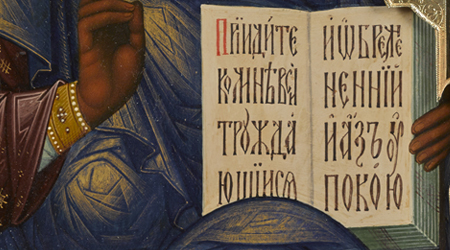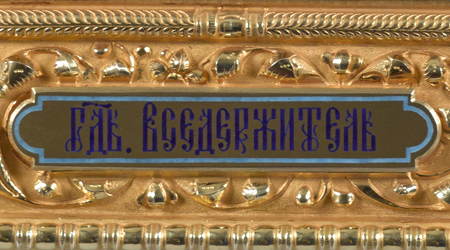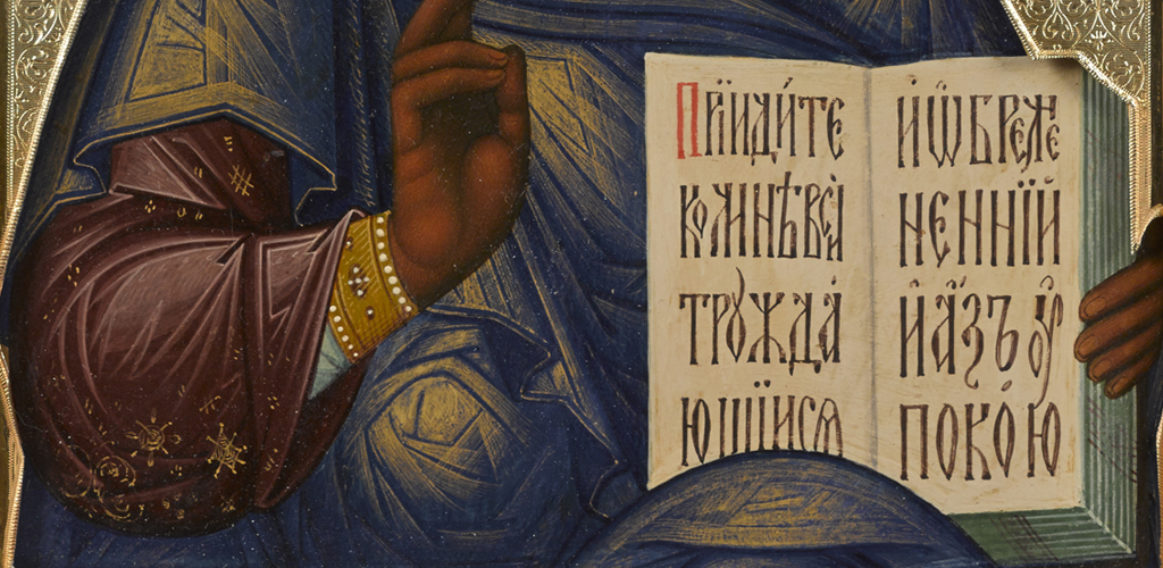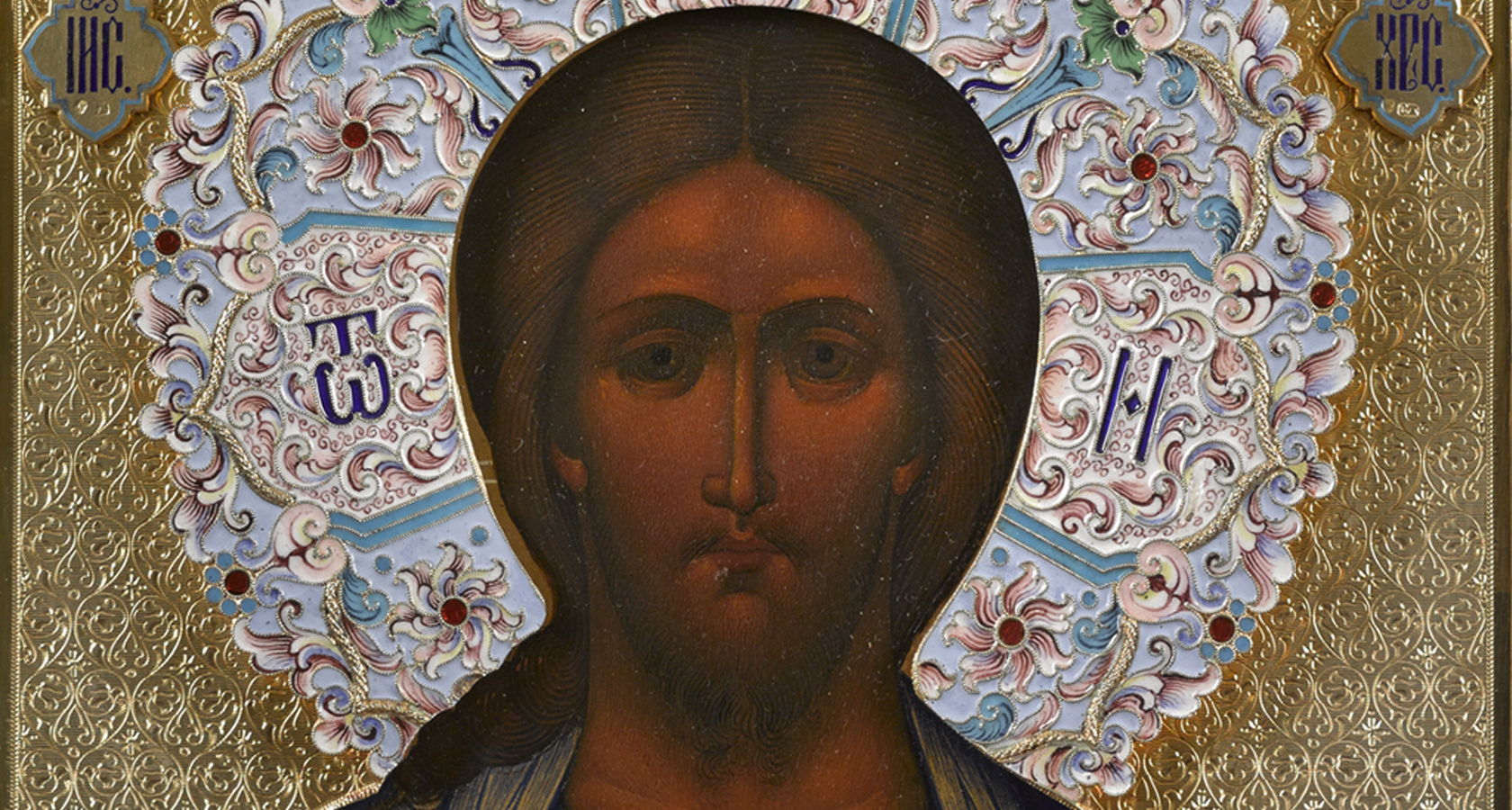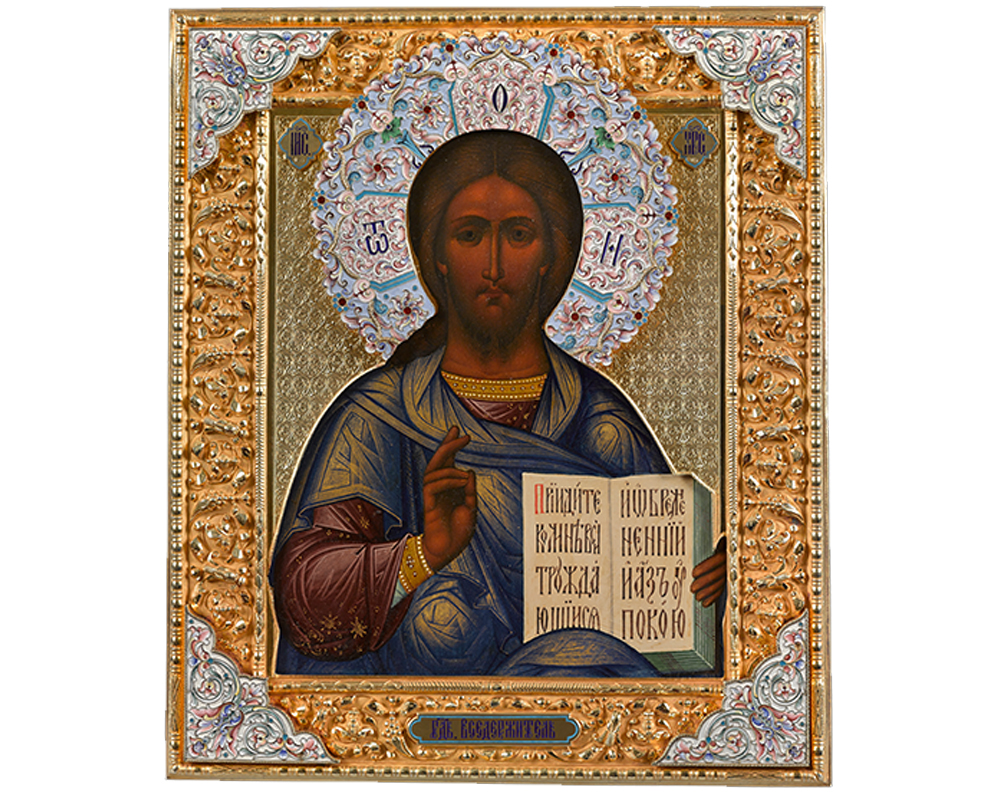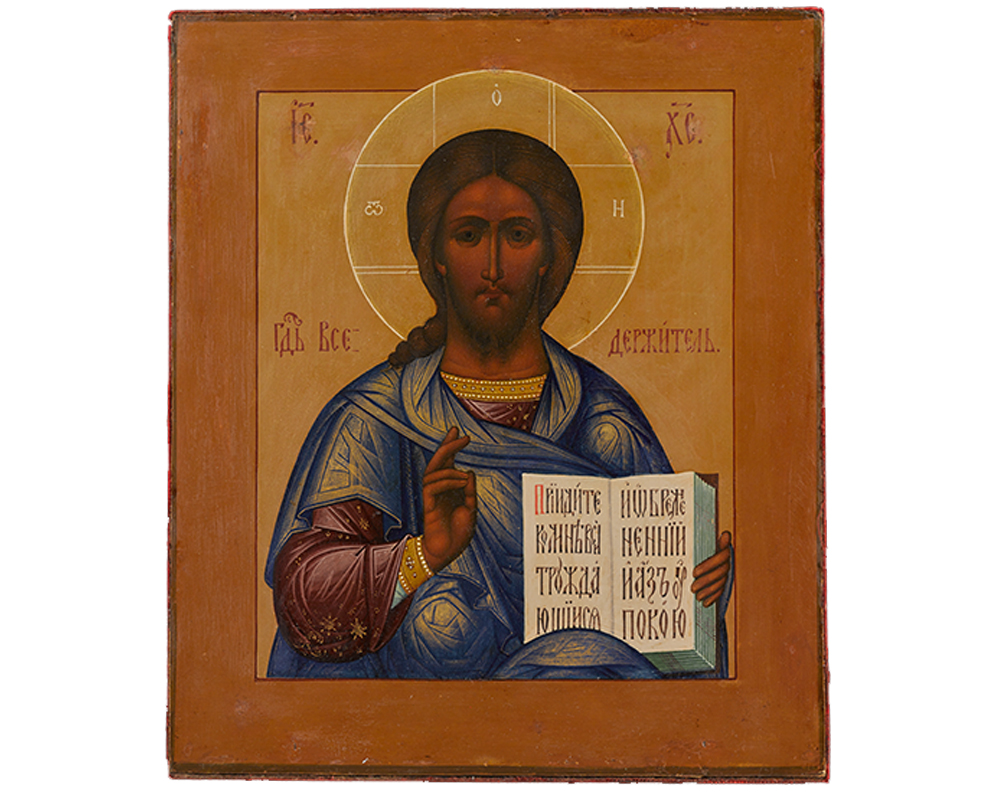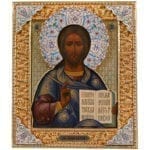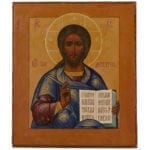A realistically painted icon encased in a silver-gilt oklad, richly decorated in repoussé and chasing with intricate foliate and geometric scrollwork. The halo and corners pieces set with polychrome cloisonné enamel foliage. The halo is also ornamented with three Greek letters Ѿ О Н (He who is). Christ is shown with a book of St Matthew’s gospel open to the following passage: Come to me, all you who are weary and burdened, and I will give you rest (Matthew 11:28).
The iconographic type of Pantocrator (Almighty or Omnipotent in Greek) shows Christ as the Lord of the Universe, co-equal and co-eternal to the Father. The iconography originates in Byzantine art and is known since the sixth century. The earliest known surviving example is the icon of Pantocrator from Saint Catherine’s Monastery in Sinai. Later on, gigantic images of the Pantocrator, represented half-length with a book of Gospels in his hand, can be seen on the mosaics and frescoes of Byzantine cupolas. In Russia, this iconography usually appeared in the Deisis Tier, the main part of the iconostasis, but could also be used for independent devotional images.
